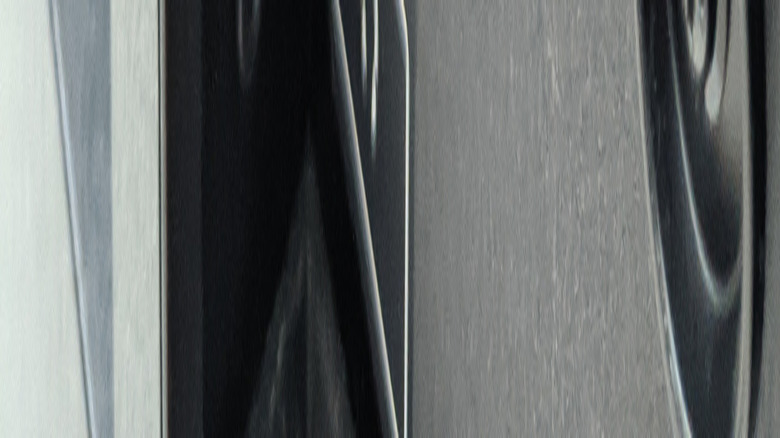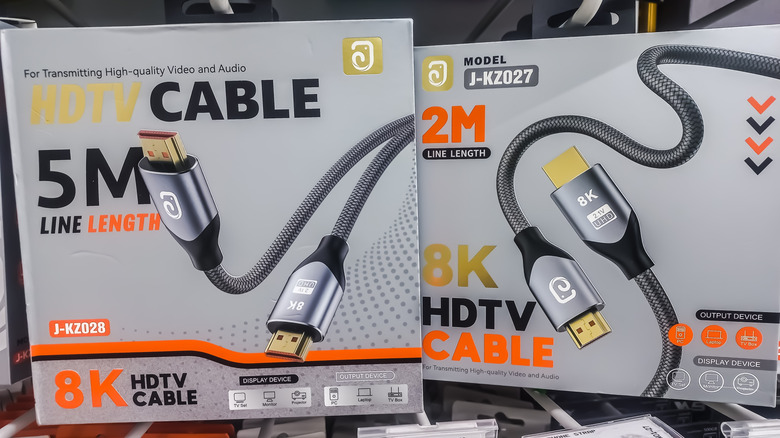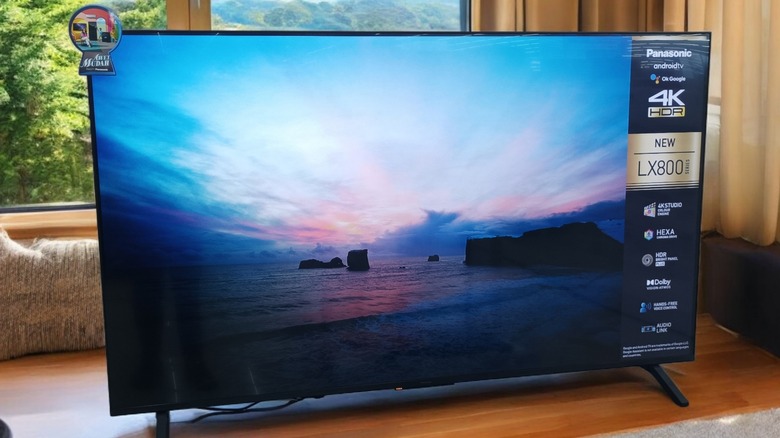3 HDMI Tips And Tricks To Improve Your TV's Image Quality
As it can carry both audio and video signals over a single cable, HDMI is the connector of choice for modern TVs. Thanks to its versatility, it's used to attach everything from AV receivers, Blu-ray players, and gaming consoles to PCs, soundbars, and streaming devices to televisions. This is also why, depending on the TV model, you can have anywhere from two to four HDMI ports, ensuring you have a decent number of ports to keep the required devices connected at all times.
It's also relatively easy to use; you plug one end of the HDMI cable into a port on your TV and the other into a port on the second device, and you're usually good to go. However, there are a few things that you need to be careful about if you want to ensure you are getting the best possible audio and video quality on your TV. Sometimes an outdated cable or a wrong HDMI port can ruin your viewing experience. Here are three HDMI tips that can help you enhance your TV's picture quality.
Choose the right HDMI port on your TV
While you can typically connect most devices to any of the HDMI ports on the back of your TV, the resulting audio-visual performance can vary. This is because not all HDMI ports are necessarily made equal in all TVs. Some of the included ports can be rated for HDMI 2.0, whereas others support the HDMI 2.1 specification. One HDMI port is also almost always noted to support either ARC or eARC tech for connecting to your sound output devices. So, it becomes pretty important that you select the right HDMI mode to get the best picture quality.
When you're connecting a gaming console or PC, it's ideal to use ports marked with the best resolution and refresh rate combination, such as 4K 120Hz or 4K 165Hz. This enables you to enjoy high refresh rate gaming if supported by your console or PC. Other devices, such as Blu-ray players and streaming media players, can typically be attached to any of the HDMI ports.
Choose the right HDMI cable
Like the HDMI ports, not all HDMI cables are made the same. The cables are rated for the HDMI specification they support, and if you are not getting the best picture quality, your HDMI cable may be to blame. So, it's vital to get the right HDMI cable for your setup. HDMI 2.1 or Ultra High Speed HDMI cables are the most suitable for use with gaming consoles, PCs, and video streaming devices or media players sending a 4K 120Hz signal with Dolby Vision and HDR10+, as they support up to 48Gbps of bandwidth, often required to send high-resolution, uncompressed audio and video signals.
HDMI 2.0 or Premium High Speed HDMI cables are okay to use with other video streaming devices or PCs that you aren't going to use for gaming. Using cables older than HDMI 2.0 is not a good idea with modern devices; even if they work, you may experience issues because of bandwidth limitations, lack of support for HDR and resolutions over 4K 30Hz. High-quality HDMI 2.0 and HDMI 2.1 cables are available at very reasonable prices, and you don't necessarily need to spend the big bucks getting a good HDMI cable.
Configure the input and picture mode
Besides the right HDMI port and cable, you need to ensure that you have chosen the correct input and picture mode for the connected HDMI source to get the best picture quality. For example, if you're connecting a PC, you may have to choose PC Mode or Game Mode, depending on what you plan to do. The PC Mode will ensure that text and graphics look sharp on the TV, whereas Game Mode reduces the input lag for a more responsive gaming experience. Most TVs have a built-in feature called Auto Low Latency Mode (ALLM), which automatically enables the Game Mode when it detects you're trying to play a game on a connected device. However, if it doesn't work, you will have to enable the mode while gaming on a console or PC.
TVs also come with a variety of picture modes that automatically adjust the picture quality to preset values. If you want the least processing from your TV, it's best to use the Filmmaker Mode if available. But if you don't want even a hint of processing, the Cinema or Movie mode is typically a good option for watching cinematic content, particularly in dark rooms. You can also try Sports mode for fast-moving sports action, but not everyone is a fan, as it turns on motion smoothing and artificially boosts brightness, colors, and contrast. Moreover, if your TV has Dolby Vision support, it may include Dolby Vision Cinema Home and Dolby Vision Cinema modes, the former of which is useful if you watch your TV in a bright room and don't want to miss out on the darker details of a scene.



